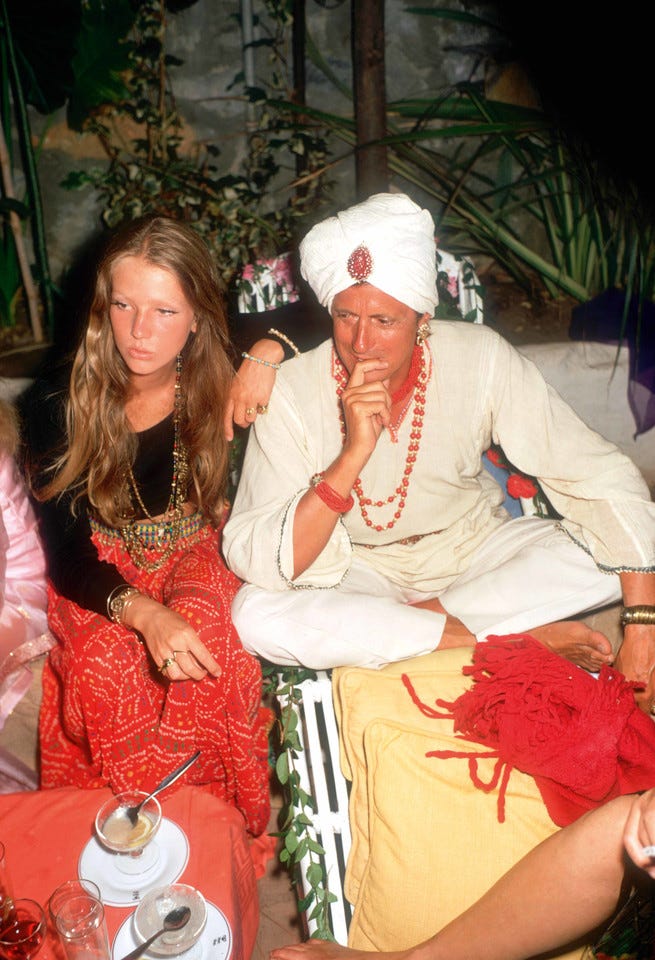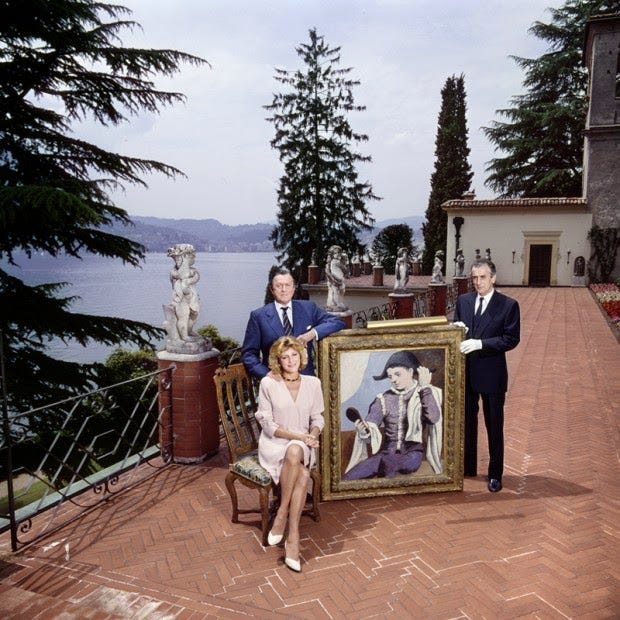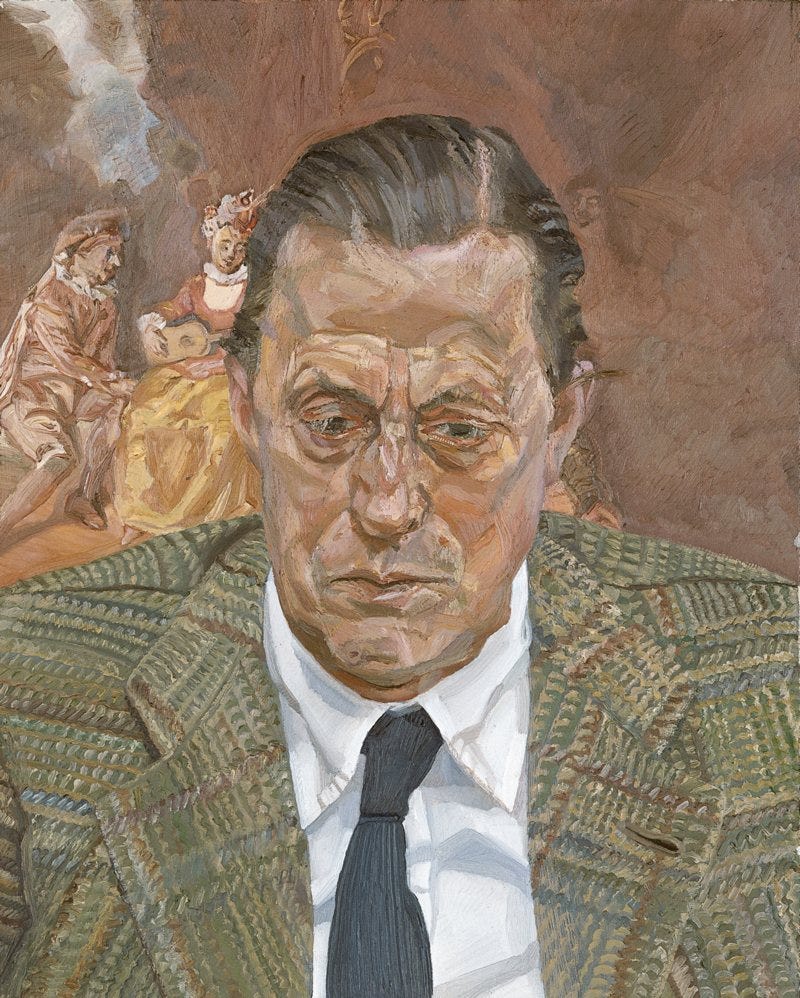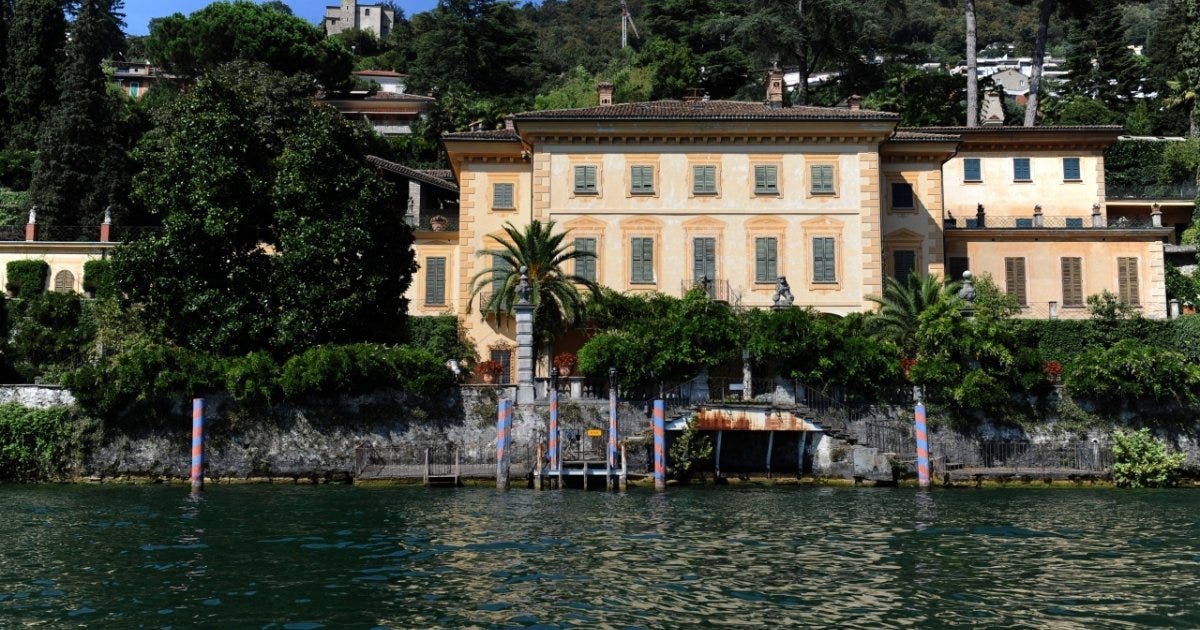Adorable Story #16: Baron Hans Heinrich Thyssen-Bornemisza
An aristocrat, jet-setter and billionaire industrialist who became an art collector and philanthropist extraordinaire

Baron Hans Heinrich Thyssen-Bornemisza de Kászon et Impérfalva, art collector and philanthropist extraordinaire, lived a life as rich and varied as his world-class art collection.
Born on April 13, 1921 in Scheveningen, Netherlands, Hans Heinrich (Heini, as he was called by the people closest to him) was the son of Heinrich Thyssen, a wealthy German-Hungarian entrepreneur, and his first wife Princess Margit of Thurn und Taxis.
To accommodate the noble title, Heinrich Thyssen added his father-in-law's last name, becoming Baron Thyssen-Bornemisza.
In Hungarian, Bornemisza means “doesn't drink wine.”
“I should have changed it to Wiznemisza — ‘doesn’t drink water’,” joked Heini, who never hid his penchant for liquor.
In the late 1930s, Hans Heinrich moved to Budapest, Hungary to join his father in managing the family’s industrial assets.
During World War 2, he served in the Hungarian army, gaining knowledge of art preservation techniques while supervising the protection of historic buildings.
In 1947, with the death of his father, Heini inherited the TBG (Thyssen-Bornemisza Group) Holdings N.V., a business conglomerate that included oil, Bremer Vulkan (naval construction company) and large parts of the Rotterdam harbour, as well as a major art collection with hundreds of paintings of European masters from between the 14th and the 18th century.
In the following years, Heini decided to diversify his father's war-shattered company into glass, plastics, automobile parts, trading and container leasing. With the profits, he was able to fully indulge his passion for art collecting.
He acquired his first old master painting in 1947 and went on an art buying spree for the next 40 years, amassing a staggering collection of over 7000 paintings including masterpieces by Canaletto, Rubens, El Greco, Monet, Picasso and many others.
His collection came to be recognized as one of the world’s greatest private collections of art.
''My father had drummed into me that modern art — for him, anything after the 18th century — was rubbish,'' Heini said. ''And while he was alive, he prevented me from buying it.''
The Baron was a prominent fixture in the European art scene, using his art collection to help museums around the world stage temporary exhibitions. He was also a generous philanthropist, donating works of art to over 30 museums across the world.
“Collecting is a sickness, but a nice one. And the only cure is to buy more art.”
Despite being an international jetsetter and bon vivant, the Baron treasured his privacy and loved to impress the viewers with his magnificent works of art. He insisted that photos of his art collection only show details but never the complete work.
When asked why, he replied:
“Because the surprise effect is lost! The public will no longer flock to see my paintings if they have already seen them in their entirety in photos.”
From then on, his business was limited to art. He bought more old masters, from Duccio di Buoninsegna to Goya; and fifteen years after his father's death, he bought his first piece of modern art, a watercolor painting by Emil Nolde (1867-1956) dated from between 1931 and 1935, starting the entry of 20th century's paintings in the collection (including Edgar Degas, Piet Mondrian, Pablo Picasso, and Fernand Léger).
Heini began his modern acquisitions with other German Expressionists like Kirchner, Grosz and Heckel, who had been suppressed by the Nazis.
“I was drawn to them politically, even before I appreciated them aesthetically.”
The original collection of 400 Old Masters inherited from his father grew to one of nearly 600, whilst Heini acquired another 900 modern works which were outside his father's range of taste.
In later years, he devoted the majority of his time, and up to 50 million Euro a year, to art deals. His only rival in scale of possessions was the Queen of England, "But," the baron observed drily, "I think the Queen is not perhaps really a collector."
The Lucian Freud Portrait
On 26 July 1981, Baron Hans Heinrich Thyssen-Bornemisza paid his first visit to the London studio of the painter Lucian Freud, near Notting Hill Gate, for the first of the long, endless sittings for the present portrait, which was completed in October 1982. This would be the start of a close and lasting relationship between the painter and the collector, which led them to discuss painting and compare their respective artistic tastes. It was an unforgettable experience for Heini, who had never before posed as a sitter and for Freud, a new source of inspiration for his subsequent oeuvre.
Villa Favorita
As Heini's collection grew, so too did its audience. He opened Villa Favorita’s galleries to the public and, beginning in the 1970’s, staged dozens of exhibitions from his artworks in museums around the world.
The wide exposure built up enormous interest in the collection.
When the Swiss authorities declined to authorise and pay for an expansion of the Villa Favorita in the 80s in order to house and exhibit to the public a wider range of artworks, Heini began his search for another nation worthy of his art trove.
Museo Thyssen
Soon, from all over the world — from Disney World to the British government — various emissaries and supplicants showed up at his doorstep on the Lugano Lake to try to convince him to sell them his collection: both Prince Charles and Mrs Thatcher flew to Switzerland to put in a bid for Britain; President François Mitterrand lobbied for France; the Getty Foundation offered millions of dollars for the US.
In a sudden move, the Swiss government even tried (fruitlessly) to block altogether the paintings’ export abroad.
Initially, in 1988 Heini agreed to temporarily loan 775 of his artworks to the Spanish State to be housed at the soon to be refurbished Palacio de Villahermosa.

In 1993, in a coup for Spain, Heini finally sold his art collection to the Spanish State for 350 million USD1 (at the time, according to an appraisal by Sotheby’s, his art collection was valued in excess of 2 billion USD).
In the meantime, Hans Heinrich continued to live in Switzerland and collect more art.
In his bedroom at the Villa Favorita on Lake Lugano, Heini would wake to be greeted by Renoir's Young Woman with Parasol in Garden. To either side of his bed were another Renoir, a Manet, a Morisot and a Pissarro.

In Switzerland, besides the Villa Favorita in Lugano, he had a chalet in St Moritz. There was a villa in Jamaica and pieds-a-terre in Paris and New York.
Personal Life
Heini married five times:
Princess Teresa zur Lippe (1946-1954): Hans Heinrich married Princess Teresa zur Lippe in 1946. They had one child together, Georg Heinrich Thyssen-Bornemisza. The couple divorced in 1954.
Nina Sheila Dyer (1954-1956): Shortly after his divorce from Princess Teresa, Hans Heinrich married the Anglo-Indian fashion model Nina Sheila Dyer in Colombo, Ceylon. They had no children together, and the marriage ended in divorce in 1956. She later married and divorced Prince Sadruddin Aga Khan and, sadly, she committed suicide in 1965.
Fiona Campbell-Walter (1956-1965): In 1956, Hans Heinrich married the British model Fiona Campbell-Walter. The couple had two children together, Lorne Thyssen-Bornemisza and Wilfried Thyssen-Bornemisza. They divorced in 1965.
Lilian Denise Shorto (1967-1984): Hans Heinrich married Brazilian socialite Lilian Denise Shorto in 1967. They had one child together, Alexander Thyssen-Bornemisza. The couple divorced in 1984.
Carmen "Tita" Cervera (1985-2002): In 1985, Hans Heinrich married Spanish socialite and former Miss Spain, Carmen “Tita” Cervera. They had one child together, Borja Thyssen-Bornemisza.
He once remarked:
"It sounds silly but I hate to divorce. It's a most disagreeable operation."
Baron Hans Heinrich Thyssen-Bornemisza died of a heart attack on April 27, 2002, at the age of 81.
— Alberto @
For example, according to internationally renown art critic Prof. Vittorio Sgarbi, as of market prices of 2022, the Caravaggio’s Santa Caterina d’Alessandria pictured above is worth north of 100m USD alone.







Wonderful story!